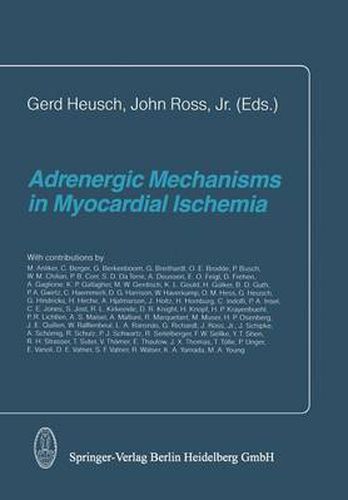Readings Newsletter
Become a Readings Member to make your shopping experience even easier.
Sign in or sign up for free!
You’re not far away from qualifying for FREE standard shipping within Australia
You’ve qualified for FREE standard shipping within Australia
The cart is loading…






This title is printed to order. This book may have been self-published. If so, we cannot guarantee the quality of the content. In the main most books will have gone through the editing process however some may not. We therefore suggest that you be aware of this before ordering this book. If in doubt check either the author or publisher’s details as we are unable to accept any returns unless they are faulty. Please contact us if you have any questions.
Stress-induced myocardial ischemia is a frequent manifestation of coronary heart disease, and sympathetic activation is an important precipitating and aggravating factor in such stress- induced ischemia. However, the complex interplay between the sympathetic initiation of myocardial ischemia, ischemia-induced alterations in sympathetic neurotransmission, as well as changes in adrenoceptor density and post-receptor signal transduction that can occur during ischemia remains incompletely understood. Not only the activation of myocardial fJ- adrenoceptors, but also the activation of coronary IX-adrenoceptors can contribute to myocar- dial ischemia. However, the role of fJ-adrenoceptor-mediated increases in contractility relative to heart rate in the initiation of ischemia is not clear, and the significance of IX-adrenoceptor- mediated changes in coronary vasomotor tone, as well as the responsible IX-adrenoceptor subtypes are highly controversial. Malignant arrhythmias may be triggered by both IX- and fJ-adrenergic mechanisms. Current research in this field is focussed not only on the underlying physiological and pathophysiological mechanisms, but also on clinical treatment strategies, e. g. , by fJ-blockade, IX-blockade, bradycardic agents and calcium antagonists. Recent findings were presented and future research directions discussed during the 61 International Titisee Conference, held at the Schwarzwald-Hotel, Titisee, March 29-31, 1990 under the sponsorship of the Boehringer Ingelheim Foundation. Dr. Hasso Schroeder and Dr. Hermann Frohlich deserve special thanks for their generous support and pleasant organization of the meeting. The publication of the proceedings has been made possible by grants from Astra Chemicals, Bayer, ICI, Dr. Karl Thomae, and Upjohn.
$9.00 standard shipping within Australia
FREE standard shipping within Australia for orders over $100.00
Express & International shipping calculated at checkout
This title is printed to order. This book may have been self-published. If so, we cannot guarantee the quality of the content. In the main most books will have gone through the editing process however some may not. We therefore suggest that you be aware of this before ordering this book. If in doubt check either the author or publisher’s details as we are unable to accept any returns unless they are faulty. Please contact us if you have any questions.
Stress-induced myocardial ischemia is a frequent manifestation of coronary heart disease, and sympathetic activation is an important precipitating and aggravating factor in such stress- induced ischemia. However, the complex interplay between the sympathetic initiation of myocardial ischemia, ischemia-induced alterations in sympathetic neurotransmission, as well as changes in adrenoceptor density and post-receptor signal transduction that can occur during ischemia remains incompletely understood. Not only the activation of myocardial fJ- adrenoceptors, but also the activation of coronary IX-adrenoceptors can contribute to myocar- dial ischemia. However, the role of fJ-adrenoceptor-mediated increases in contractility relative to heart rate in the initiation of ischemia is not clear, and the significance of IX-adrenoceptor- mediated changes in coronary vasomotor tone, as well as the responsible IX-adrenoceptor subtypes are highly controversial. Malignant arrhythmias may be triggered by both IX- and fJ-adrenergic mechanisms. Current research in this field is focussed not only on the underlying physiological and pathophysiological mechanisms, but also on clinical treatment strategies, e. g. , by fJ-blockade, IX-blockade, bradycardic agents and calcium antagonists. Recent findings were presented and future research directions discussed during the 61 International Titisee Conference, held at the Schwarzwald-Hotel, Titisee, March 29-31, 1990 under the sponsorship of the Boehringer Ingelheim Foundation. Dr. Hasso Schroeder and Dr. Hermann Frohlich deserve special thanks for their generous support and pleasant organization of the meeting. The publication of the proceedings has been made possible by grants from Astra Chemicals, Bayer, ICI, Dr. Karl Thomae, and Upjohn.